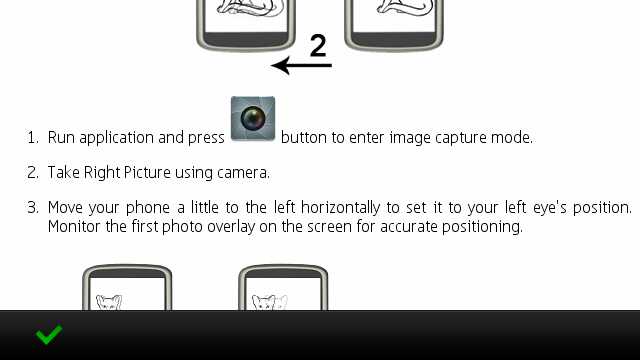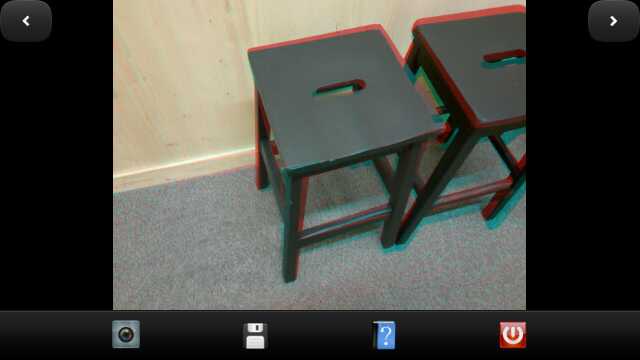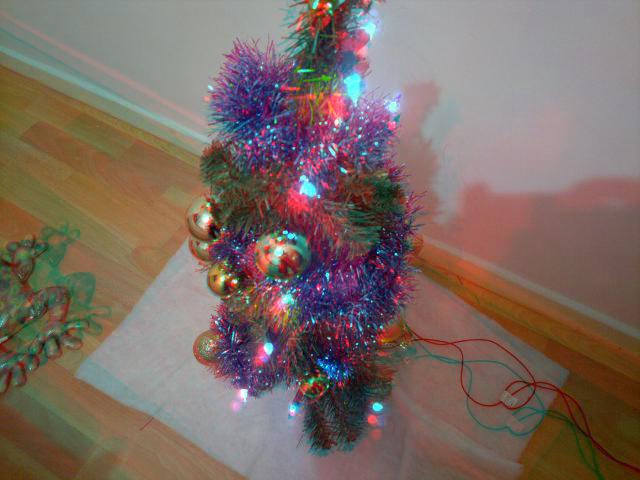Published by Steve Litchfield at 19:48 UTC, December 20th 2011
Summary:
Maybe I'm just rubbish at making 3D photos. Or maybe I haven't got enough patience. Regardless, I've still had fun trying out 3D Photo Camera for Symbian^3 phones - it's hard to use (properly), the results aren't that satisfactory and the application is very definitely glitchy. But - hey - it produces 3D photos - for real. On existing hardware. What's not to love? Quite a bit, actually, read on...
It won't have escaped your notice that the Nokia N8 and other Symbian^3 smartphones don't have two cameras on their rear faces, as the LG Optimus 3D famously does over in the Android world. The idea then is to 'bodge it' - a technical term that we photo geeks like to use. 3D Photo Camera facilitates the taking of two photos, one after the other, with a sideways move (left) of around three inches (5cm) between the first and second snaps. 3D Photo Camera then combines the two shots to create a colour anaglyph image - you know, where you view it through a pair of red/blue glasses.
It's an interesting, if low tech idea - does it work? Yes. Does it work that well? Not really...

3D Photo Camera includes a helpful mini-tutorial to demonstrate what to do, though the actual lining up of the second shot takes some practice - a faded version of the first shot is shown in the viewfinder and superimposed, to help you get some of the central details in roughly the right place. In each case, you take the shot using the on-screen shutter icon and not the phone's dedicated camera button - not a huge problem.
After the second shot is taken, you're presented with a split screen view (both images), swiping left and right to a stereogram view, a mono anaglyph and, the most interesting to me, the colour anaglyph:

Tapping on the 'Save' icon brings up a file dialog so that you can specify exactly where you'd like the anaglyph stored. It's at this point that you excitedly bring up the image in Photos on the phone, or perhaps transfer it and then view it on your larger PC or Mac screen - and realise that it's only saved at VGA resolution (640 by 480 pixels), presumably to keep processing time down in the application.
I couldn't see any settings to 'up' this resolution, although it probably doesn't matter because the actual 3D effect is rarely that convincing. It's not all 3D Photo Camera's fault - the mixed results are down to the anaglyph technology itself being the 'lowest common denominator' of the 3D world, and down to the huge potential for human error in moving the phone camera and lining up the second shot.
Here's one of my better attempts, admittedly of a multicoloured subject that perhaps wasn't an ideal colour anaglyph 3D candidate:

Before dismissing the application out of hand, it should be noted that it is possible to get good results, as demonstrated by the developer's sample images, shown below. Try them out with a pair of red/blue glasses yourself. It's not clear how many tries were taken to achieve these though, nor how much skill on the part of the operator!


There's another problem with 3D Photo Camera, actually, partly explaining the fairly low score - the application wasn't very stable, I often had to exit it in order for the camera to work properly again, between 'takes'. At one point it froze completely and I had to abort it from the Symbian multitasking menu.
I haven't given up on this app, mind you. If Oleg can improve stability and 'up' the resolution to, say, two megapixels, then we'd be in business. There's still the requirement for anaglyph glasses and the need for a healthy degree of trial and error, but then perhaps that's all part of the fun?
Steve Litchfield, All About Symbian, 20 Dec 2011
Buy Link | Download / Information Link
blog comments powered by Disqus
No hay comentarios:
Publicar un comentario